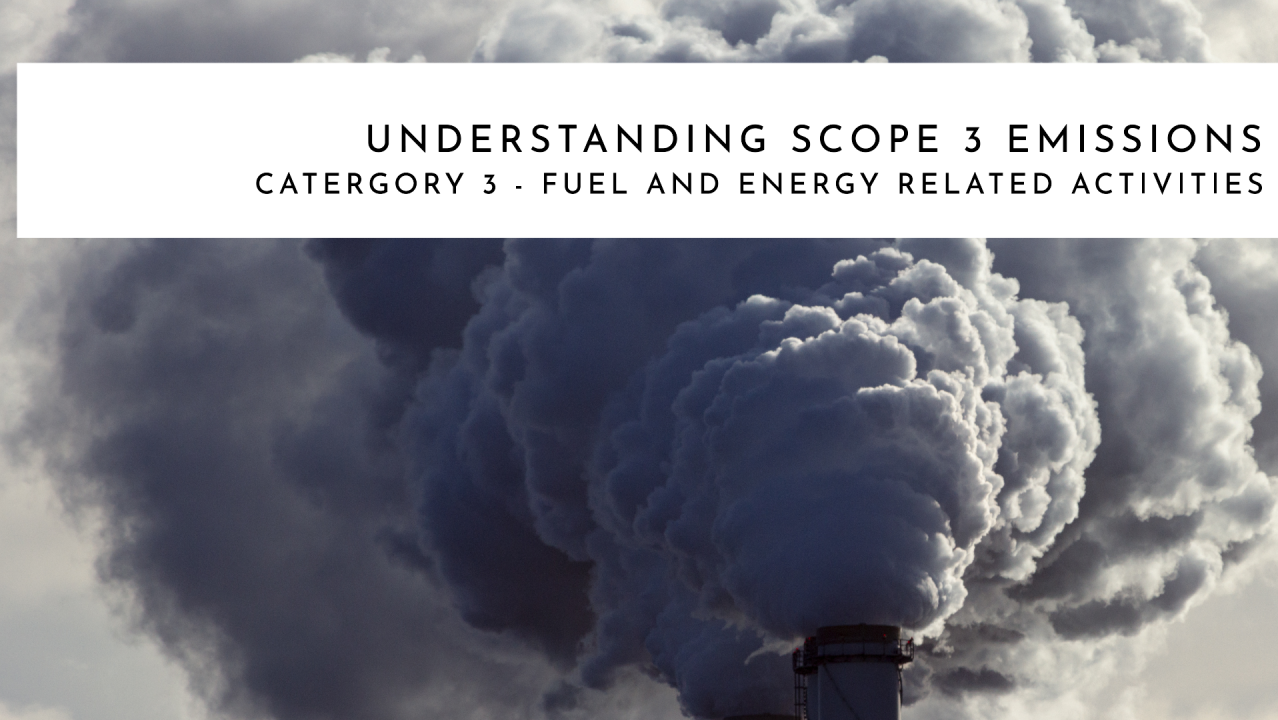
Understanding Scope 3 Emissions: A Focus on Category 3 – Fuel and Energy-Related Activities
As organizations increasingly embrace sustainability, measuring greenhouse gas (GHG) emissions throughout their value chain becomes critical. The GHG Protocol, a widely accepted international standard, categorizes emissions into three scopes. While Scope 1 and 2 deal with direct emissions from owned or controlled sources and indirect emissions from purchased electricity, respectively, Scope 3 extends beyond these, covering all other indirect emissions. Within Scope 3, there are 15 categories, and today, we focus on Category 3: Fuel- and Energy-Related Activities (Not Included in Scope 1 or 2).
Notably, these emissions are distinct from the combustion of fuels and consumption of energy, which are already included in Scope 1 and 2 emissions.
What Is Category 3?
Category 3 covers the upstream emissions from fuel and energy that an organization purchases but does not directly control or consume, which means the emissions associated with the production, extraction, and transportation of these fuels and energy sources. These activities happen before the organization uses the fuel or energy in its operations, making them indirect emissions. The actual consumption of these fuels and energy sources falls under Scope 1 and 2.
To put it simply, Category 3 emissions represent everything that happens before your organization flips the switch or pumps the gas.
Key Components of Category 3
Why Is Category 3 Important?
Category 3 is crucial because it highlights the hidden emissions in your supply chain that aren't immediately visible but have a substantial impact. For example, if your company purchases electricity, the direct emissions from that electricity consumption are reported under Scope 2, but what about the emissions from the mining of the coal that generated that electricity? Category 3 ensures that these upstream activities are accounted for, providing a more comprehensive view of your organization’s carbon footprint.
Real-World Examples
Let’s bring this concept to life with a few examples:
Calculating Category 3 Emissions
While there are four different upstream fuel and energy-related activities captured in category 3, the two calculation methods may be used for all four activities. The activity data and emission factors will vary based on the activity being calculated.?The calculation method an organization selects depends on two considerations:
Primary data?may be provided?directly from suppliers or other value chain partners and include specific activity-related data or actual emissions. Examples for category 3 include:
Secondary data?is general data that’s available, such as industry-average data. This type of data is used to estimate scope 3 emissions when primary data is unavailable.
Examples for category 3 include:
CALCUATION METHODS
Organizations have two main methods for calculating these emissions, as outlined in the GHG Protocol:
What data is needed?
To use the supplier-specific method, organizations need the following data:
·?????? Total quantities of electricity, steam, heating, and cooling purchased and consumed per unit of consumption broken down by supplier, grid region, or country.
·?????? Utility-specific emission factors for extraction, production and transportation of fuels consumed of electricity, steam, heating, or cooling generated (Note: emissions factors from combustion of fuels or purchased electricity are accounted for in scope 1 or 2).
·?????? For transmission and distribution losses, utility-specific loss rate (percent), specific to the grid where energy is generated and consumed.
2. Average-Data Method: If supplier-specific data is unavailable, organizations can use industry-average emissions factors. This method is useful when data is limited, but it provides less accuracy compared to the supplier-specific method. For example, a cement manufacturer might use average emission factors from the Intergovernmental Panel on Climate Change (IPCC) database to calculate emissions from its coal consumption.
To use the average-data method, organizations need the following data:
Steps to Calculate Emissions Using These Methods
The process of calculating Category 3 emissions generally follows three key steps:
Example Calculations: Let’s look at a hypothetical scenario:
Deciding Which Method to Use
The choice between the supplier-specific method and the average-data method depends on the availability of data and the significance of the activity. If detailed supplier data is available, it is advisable to use the supplier-specific method for more accurate results. However, when data is limited, the average-data method provides a practical alternative.
Understanding and calculating Scope 3 emissions, especially Category 3, is essential for any organization committed to reducing its environmental impact. These emissions, though indirect, represent a significant portion of an organization’s carbon footprint. By accurately accounting for them, organizations can make more informed decisions, set meaningful reduction targets, and contribute to a sustainable future.
Has your organization started measuring its Scope 3 emissions? If not, now is the time to consider the full impact of your operations. #Sustainability #ESG #Scope3Emissions #GHGProtocol #EnergyEfficiency #ClimateAction
?
Consulting Services - CFO Services, ESG Practice, Business and Strategy Consulting and Independent Directorship
3 个月Thanks for sharing this article Kaushik. Scope 3 emissions are generally not captured and reported. We see many companies publishing their emission data excluding scope 3 while we know them of their extensive use of third party services. Emission on transport of employee to and back to office by IT majors are a classic case. Carbon footprint count from all activities are important and its publication too for the users of non-financial reporting. It will be very ideal that the service providers issue certificate of carbon foot print as generated against each of the invoices raised by them and that the authorities mandate this requirement, like the issuing of certificate of origin or a way bill to the user.
Infrastructure | ZEV | Mobility | ESG | No. 10
3 个月Excellent perspective on Category 3, Scope 3 emissions! For the example calculation, Urooj Khan, I think I missed the connection between ABC Co. and City Ballet. Thanks
Co-Founder & CSO at 4Seer Technologies | GRI Certified Sustainability Professional | CSRD Fundamentals Certified | Data, ESG, Bespoke Development | Chartered Accountant | Cost Accountant
3 个月Great perspective Urooj Khan! You making some poignant and pertinent points here.